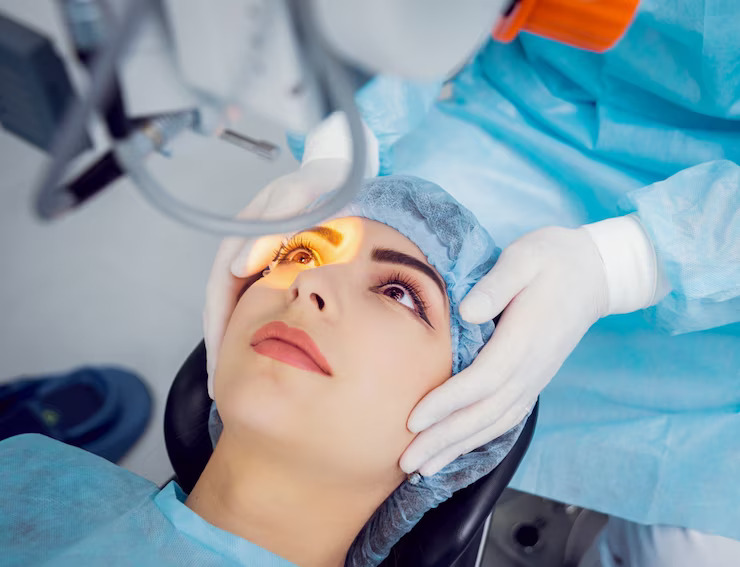A cataract is a common eye condition that primarily affects older individuals but can occur at any age. It involves the clouding of the eye’s natural lens, which is responsible for focusing light onto the retina, allowing us to see clearly. This clouding progressively reduces vision clarity, leading to various visual impairments. To understand cataracts more comprehensively, it’s crucial to delve into their causes, types, symptoms, and treatment.
Causes of Cataracts:
Cataracts develop when the proteins in the eye’s lens clump together, creating a cloudy area. Several factors can contribute to their formation:
Aging
The most common cause of cataracts is age-related changes in the lens. Over time, protein structures can break down and lead to clouding.
Ultraviolet Radiation:
Excessive exposure to ultraviolet (UV) rays from the sun or artificial sources, like tanning beds, may increase the risk of cataracts.
Medical Conditions:
Conditions like diabetes, hypertension, and eye diseases can accelerate cataract formation.
Medications:
Prolonged use of certain medications, such as corticosteroids, may promote cataract development.
Genetics:
Cataracts can run in families, suggesting a genetic component.
Types of Cataracts:
There are several types of cataracts:
Nuclear Cataracts:
These form in the center (nucleus) of the lens and are typically age-related.
Cortical Cataracts:
These develop in the lens cortex, which surrounds the central nucleus, and appear as wedge-shaped spokes extending from the outer edge of the lens to the center.
Subcapsular Cataracts:
These cataracts form at the
of the lens, often beneath the lens capsule, and are commonly seen in individuals with diabetes or those taking high doses of steroids.
Congenital Cataracts:
Some people are born with cataracts or develop them during childhood due to genetics or infections during pregnancy.
Symptoms of Cataracts:
Cataracts can cause a range of visual symptoms, including:
Blurred or Hazy Vision:
Objects may appear blurry or less sharp.
Glare:
Increased sensitivity to bright lights or sunlight can lead to discomfort and difficulty seeing.
Double Vision:
Cataracts may cause double vision in one eye.
Faded or Yellowed Colors:
Colors may appear less vibrant or take on a yellowish tint.
Frequent Prescription Changes:
Frequent changes in eyeglass or contact lens prescriptions may be indicative of cataracts.
Cataract Treatment:
The most effective treatment for cataracts is surgical removal. Cataract surgery is one of the most common and successful medical procedures, with a high rate of patient satisfaction. During surgery, the cloudy natural lens is replaced with an artificial intraocular lens (IOL), which can significantly improve vision and clarity.
In conclusion, a cataract is a common eye condition characterized by the clouding of the eye’s natural lens, leading to visual impairment. While cataracts are a part of the aging process, they can also result from various factors, including genetics, UV exposure, and medical conditions. Fortunately, cataract surgery is a highly effective treatment, offering the potential for a significant improvement in visual quality and an enhanced quality of life.


